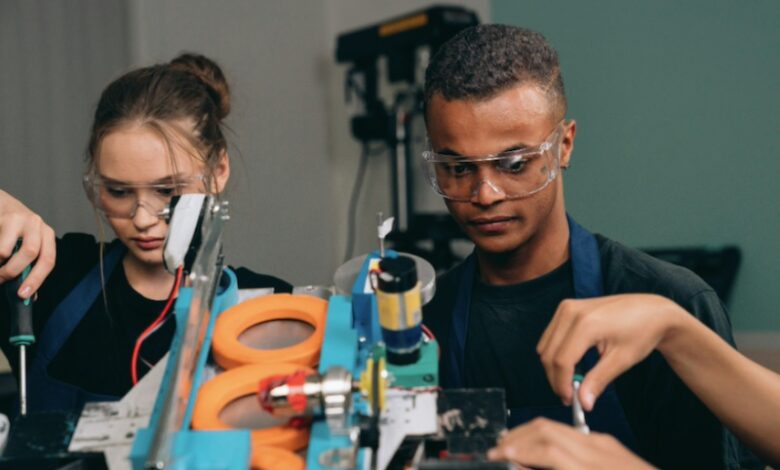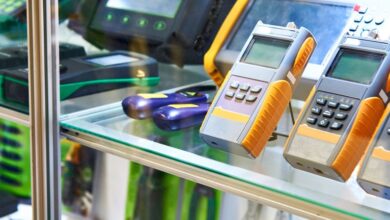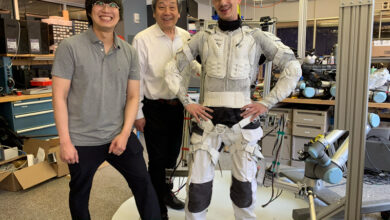Transforming Electronics Assembly and Manufacturing – Robotics & Automation News

In the ever-evolving landscape of manufacturing, especially electronics assembly, AI-driven robotics is transforming the nature of quality control.
By using deep learning, these systems can detect patterns and defects that humans cannot, which provides ample opportunity for companies to leap ahead of their competition.
As AI continues to integrate into manufacturing, its role in ensuring stringent quality standards, enhancing inspection capabilities, and maintaining compliance with IPC (Institute for Printed Circuits) standards becomes increasingly vital.
The Role of AI in Quality Control
AI-driven robotics significantly enhance quality control by using advanced algorithms and machine learning to detect defects more accurately than human inspectors.
These systems can analyse large volumes of data in real time, identify patterns, and make decisions based on stringent quality standards. This is important in the automotive, pharmaceutical, and electronic assembly industries, where even minor defects can lead to substantial issues.
Machine Learning and Deep Learning
The AI algorithms that work on modern quality control depend upon machine learning and deep learning. Machine learning involves the development of algorithms and data sets that allow AI to perform tasks without explicit instructions.
With machine learning, AI can learn and make decisions on data independently. Deep learning is a type of machine learning that uses layers of networks to interpret complicated data. This enables AI to understand and learn from images, text, video, and audio.
Machine learning – and especially deep learning – is being used to train AI on large data sets so that it can detect patterns and anomalies. This is then applied to quality control.
For example, in the electronics manufacturing industry, AI can be trained to detect soldering defects, missing components, and alignment issues. These algorithms continuously learn from new data, improving their accuracy over time.
Real-Time Data Analysis
One of the significant advantages of AI-driven robotics is the ability to process and analyse data in real time. High-speed cameras and sensors capture detailed images and measurements of products as they move through the production line.
AI systems then quickly analyse this data, instantly identifying defects and deviations from quality standards. This immediate feedback allows for quick corrective actions, reducing the amount of quality issues in manufacturing.
Going Beyond Human Capabilities
AI systems excel in pattern recognition, which is crucial for detecting defects that may not be obvious to human inspectors. For example, AI can identify subtle variations in texture, colour, or shape that could indicate a potential issue.
This is particularly important in industries like electronics and automotive manufacturing, where precision and consistency are absolutely vital. Pattern recognition capabilities ensure that even the smallest defects are detected and addressed promptly.
The Seismic Impact of AI Robotics on IPC Standardisation
IPC is a trade association that standardises the assembly and production of electric equipment and assemblies and it is the bedrock behind the success of modern electronics manufacturing. AI robotics poses a number of significant opportunities to further enhance IPC moving forward:
- Improved Compliance: AI-driven robotics ensure every product meets IPC standards through consistent and precise inspections, reducing human error and ensuring stringent quality compliance.
- Advanced Inspection Capabilities: AI-equipped robotics perform detailed inspections of solder joints, component placements, and connections, all of which are critical for IPC standards.
- Enhanced Traceability: AI systems provide detailed inspection records which is important for maintaining traceability when it comes to IPC compliance.
- Training and Skill Development: Integrating AI-driven robotics requires increased IPC training for human operators, aligning with IPC’s focus on developing a skilled workforce adept at using advanced technologies to uphold quality standards.
The Future of Quality Control in Electronics Manufacturing: As AI-driven robotics evolve, their role in quality control will expand. Future advancements may include sophisticated machine learning models for predictive maintenance, reducing downtime and enhancing production efficiency.
Key AI Robotics Trends to Watch for the Future
As AI-driven robotics continue to evolve, their role in quality control within electronics manufacturing is ready for significant expansion in several different ways.
The Integration of IoT and AI
Combining Internet of Things (IoT) devices with AI-driven robotics will revolutionise quality control. IoT sensors can monitor production environments in real time, providing data that AI systems analyse to maintain optimal conditions.
Predictive maintenance, powered by this integration, will allow for timely repairs, minimising production disruptions.
The Development of Adaptive Quality Control
AI systems that learn and adapt to new products and manufacturing methods offer greater flexibility and efficiency. These adaptive systems can adjust in real-time based on data analysis, ensuring quality control processes evolve with production innovations.
Advanced machine learning models will continually improve from new data, enhancing their defect detection and process optimisation capabilities.
Predictive Analytics and Increased Maintenance
Predictive analytics will become integral to quality control. By analysing historical and real-time data, AI can foresee potential issues, enabling proactive measures. This reduces unexpected downtime and optimises production schedules, leading to more efficient operations.
Enhanced Human-Robot Collaboration
Future quality control will see increased collaboration between humans and robots. Collaborative robots (cobots) will handle repetitive or hazardous tasks, while humans focus on complex and creative quality control aspects.
This synergy will enhance productivity and job satisfaction, creating a more skilled workforce that can adapt to advanced technologies.
There can be no debate that AI-driven robotics is revolutionising the nature of quality control in manufacturing, especially for electronics assembly. These systems provide consistent, precise inspections and reduce human error to ensure strict adherence to IPC standards.
As AI technology continues to develop, the integration of IoT devices, adaptive quality control systems, and predictive analytics will further increase efficiency and reduce downtime.
Human-robot collaboration will also play a key role, combining the strengths of both to achieve higher productivity and quality standards.



